What Cheesemakers Don't Want You To Know
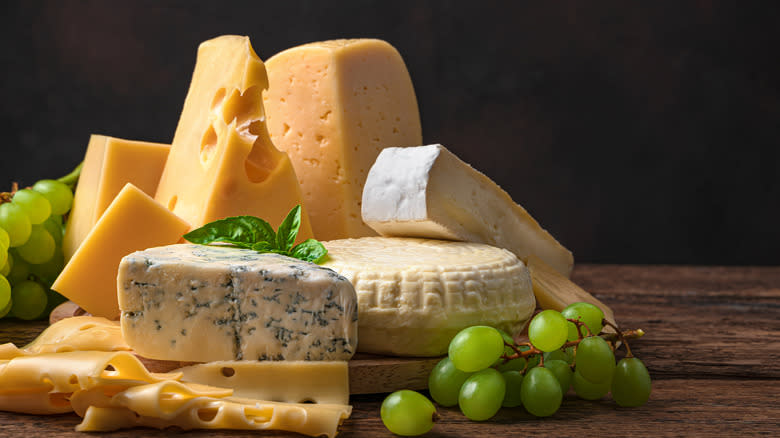
For many people, cheese is up there with the best foods in the world. It's versatile — just as good straight from the block as melted on pizza or grated over pasta. Plus, there are over 1,800 varieties, so whether you love cheese super milky or as pungent as it comes, there's a cheese that will suit most palates.
But it isn't all fun and games in the world of cheese — and there are some things that cheesemakers don't want you to know. While most folks already know that blue cheese contains mold, you might not realize that some other cheeses contain mold, or that microbes and bacteria give cheese its distinctive flavor. Then there are problems with processed cheese — this shouldn't be too much of a shock, but it's not exactly cheese.
From the interesting to the mildly disturbing, we have 13 facts about cheese that the people who make it don't want you to know. We're not saying that it should put you off cheese, but you might think twice before you next make yourself cheese and crackers. Either way, you're bound to learn something new.
Read more: US Foods You Surprisingly Can't Find In Canada
Microbes Are What Give Cheese Its Flavor

Microbes — such as bacteria, mold, and fungi — often get a bad rap. It might seem like you want to keep them away from any food you want to eat, not encourage their growth. However, when it comes to cheese, microbes do a lot of the heavy lifting. It's microbes that give cheeses their complex flavors. Without them, you'd just be eating curdled milk.
It's not that a single microbe gives cheese its flavor. It's more like a team of various bacteria, molds, and fungi getting together to give you the goods. And, the more stinky the cheese, the larger the number of microbes at play. We do, however, know some of the important microbes in cheese. For instance, Pseudoalteromonas are types of marine bacteria commonly found in cheese, and they produce a large number of flavor compounds. Then, there's Penicillium, which is injected into blue cheeses to give them their blue-green veins and distinctive flavors.
So when it comes to cheesemaking, microbes are your friends. Without them, you'd have terribly bland cheese without those distinctive flavors that make it tasty and interesting to eat.
Cheddar Is Dyed That Orange Hue To Look Like It's Rich In Beta-Carotene
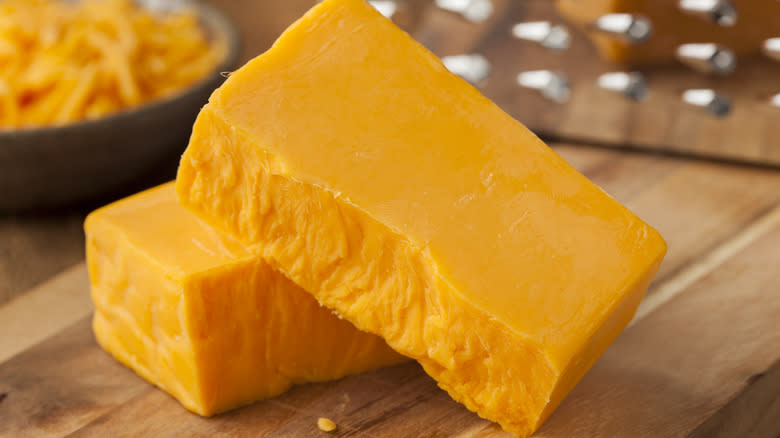
If you're used to cheddar being bright orange, it's time to learn the truth. That isn't the natural color of cheddar. Okay, maybe you could have guessed this. Cow's milk is white and cheddar is made from cow's milk, so it makes sense that it would be an off-white color. And without any intervention, it would be.
The reason that cheddar cheese has that orange hue is because of a dye added during the production process. Perhaps you're concerned about artificial additives being put into your cheese. But there's nothing to worry about in terms of the dye. Cheddar is dyed with annatto, which is made from the fruit of the achiote tree, so it's totally natural.
It might strike you as odd that dye is added to cheese, but there's a method behind the madness. You see, in years gone by, cheddar made from British milk had a slight orange tint because cows in the U.K. had a diet rich in beta-carotene. This meant cheddar was subtly orange. To replicate this, American cheesemakers started adding annatto to give cheese the orange hue people had come to expect.
The FDA Has Banned Some Cheeses In The U.S.
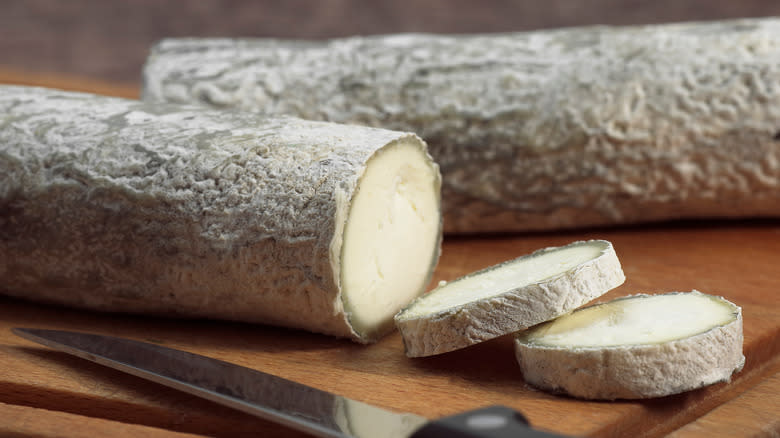
It might surprise you that the FDA has named some cheeses too dangerous for consumption in the United States. These are cheeses that are made from raw milk and aged for less than 60 days. It's illegal to either buy or sell any cheese that fits these categories in the U.S. Yes, there is a slight risk to eating cheese made from raw milk, but it's sold and eaten in many countries, so it should be a case of doing a personal risk assessment.
So, what cheese are you missing out on if you live in the U.S.? There's Brie de Meaux — a raw cow's milk cheese that's traditionally aged for just four weeks. Sainte-Maure-de-Touraine is made from raw goat's milk and therefore banned according to FDA regulations. Fans of Brazilian cuisine might bemoan the lack of Queijo da Canastra in the U.S., which isn't allowed because it's made from raw cow's milk and aged for just 21 days. And, although you can buy Epoisses de Bourgogne in the U.S., it's a special version made with pasteurized milk and is not the same as the version made for the European market.
These are just a small number of the cheeses you can't buy in America. So whether you think it's a good thing or a bad thing, there are cheeses banned in the U.S. over potential food safety issues, such as the chance of E. Coli or Listeria infection.
Processed Cheese Isn't Totally Cheese
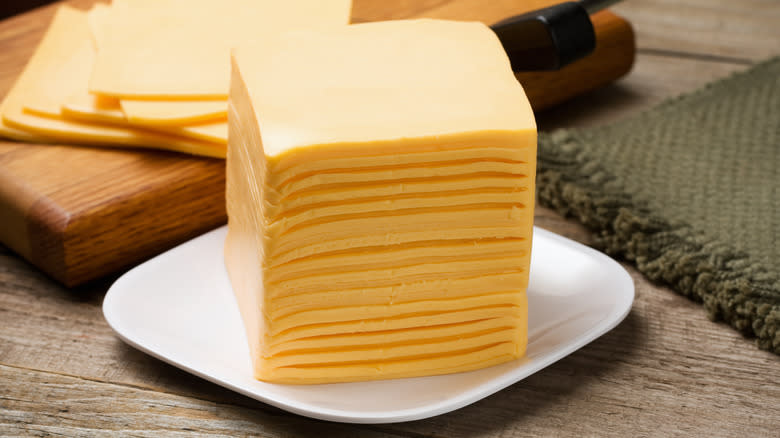
You've probably eaten processed cheese at some point in your life, whether it was Cheez Whiz on a hot dog at a cookout, slices of American cheese on a burger, or string cheese in your lunchbox. Maybe you still eat it now. There's nothing wrong with liking processed cheese, but is it actually cheese? Not really.
Processed cheese isn't 100% cheese. It's effectively cheese that's cut with other ingredients. Manufacturers take cheese and add emulsifiers, preservatives, salt, food dyes, and other ingredients, and the result is something that's part cheese and part ... other stuff. If that sounds pretty weird, it's because it is. Makers of processed cheese take cheese that could have been eaten straight-up and add more ingredients to make a processed cheese product. It's an odd concept.
But the fact is, the resulting cheese lasts significantly longer, which is the main reason why it exists. It can also be made into various forms, such as dips and spreads, as well as slices and blocks. And those slices and blocks of processed cheese? We all know how well they melt. Sometimes nothing but a slice of American cheese will do, and that's okay.
Some Cheese Is Aged In Caves
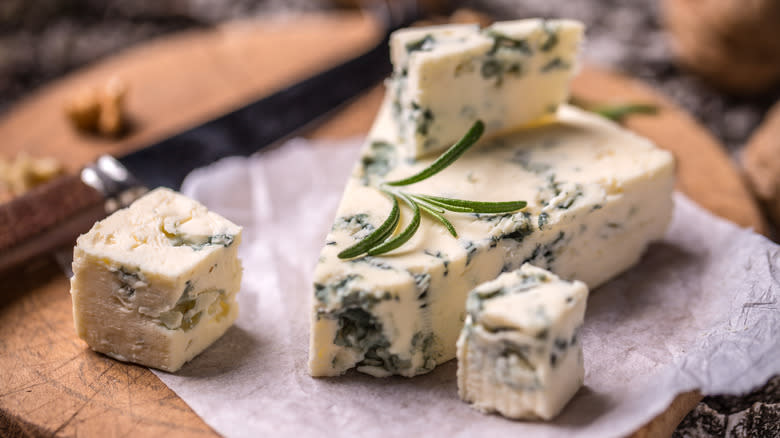
Dark, damp, and a little scary, caves are the sort of places you have nightmares about getting lost in, not somewhere you expect cheese to be produced. But what you might not know is that some cheese is aged in caves. This comes from an old cheese-making tradition.
Thousands of years ago, people started aging cheese in caves. This was long before the advent of modern refrigeration, so folks made use of what nature provided. Caves are naturally cooler than the ambient outdoor temperature, so they're the perfect place to age cheeses without them spoiling.
This totally makes sense in historical terms, but what about today? Well, many so-called cave-aged cheeses are aged in man-made cheese caves, which makes more sense for commercial production. While this conjures up images of some kind of man-made underground lair, a cheese cave is just the name for any cool, humid, climate-controlled space used for aging cheese. In commercial practices, this is usually a large room with plenty of shelving for holding cheese as it ages.
However, there's still some cheese that's aged in genuine natural caves. One of the most well-known of these is Roquefort. To be sold as Roquefort, EU law dictates that cheese must be aged in the Roquefort-sur-Soulzon caves of southern France. There's also some British cave-aged cheddar that's aged in natural caves called Wookey Hole.
Swiss Cheese Has Holes In It Because Of Hay Dust
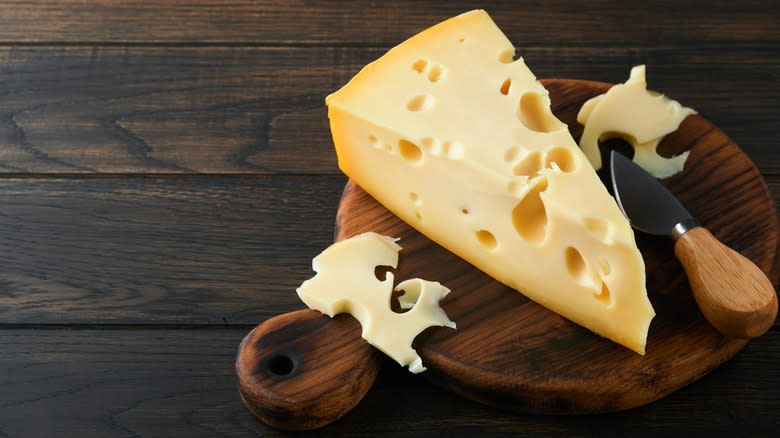
Until 2015, it was somewhat of a mystery as to why Swiss cheese had holes in it. The common theory was formed back in 1912 by a chemist called William Mansfield Clark. He thought it was due to a specific type of bacteria that formed during the aging process. This bacteria is said to give off carbon dioxide, which forms bubbles, leaving holes behind when those bubbles pop. But, there was also some concern around the fact that commercially produced Swiss cheese was getting less and less holey. And then, the mystery was solved. It turns out that it's hay dust that makes the holes in Swiss cheese — or at least helps them to form.
It seems that microscopic hay particles are involved in the formation of these holes during the aging process of Appenzeller, Emmentaler, and other traditional Swiss cheeses. It's the hay particles (or other particulate matter) that cause weak spots in the cheese curd. Due to these weak spots, it's easier for carbon dioxide to form and cause holes. And, the disappearing holes? Well, this was down to the milk being too clean. Due to modern milking practices, it was unusual to get these tiny flecks of hay in milk and therefore fewer and fewer holes were being formed. So, if you like holey Swiss cheese, you've got hay to thank for it.
Not All Cheese Is Vegetarian
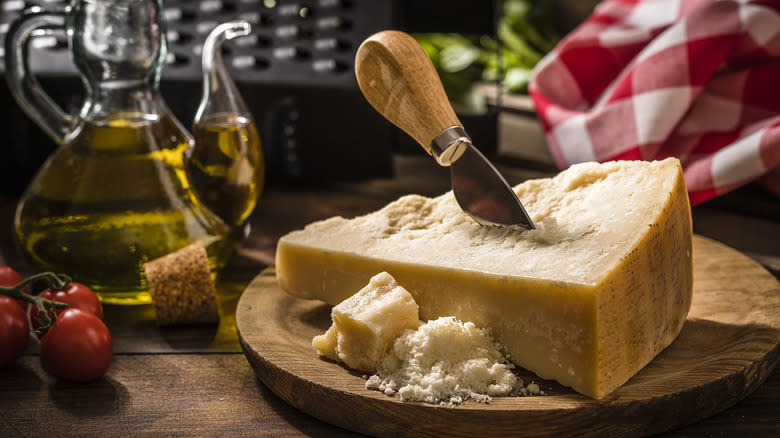
While standard cheese certainly isn't vegan, it makes sense that you'd assume it's vegetarian. In fact, you might consider it a good source of protein and calcium for vegetarians and an easy way to add extra flavor to dishes that you make for your veggie friends and family. Before you shred Parmesan over that veggie pasta dish or crumble Gorgonzola onto a salad, it's worth noting that not all cheese is vegetarian.
Some cheese contains animal rennet. This rennet is made from enzymes extracted from the stomachs of unweaned calves. It contains a coagulant that causes milk to curdle so it can be used to make cheese. So cheeses made using a traditional process generally aren't vegetarian.
However, manufacturers know that many people today want to buy vegetarian cheeses, so there are vegetarian alternatives to rennet used to make many cheeses. Want to buy vegetarian cheese? First, look for a label that states it's vegetarian. If it doesn't have one, look at the ingredient list. If "rennet" is listed, it isn't vegetarian. However, if it says something like "vegetable rennet," "vegetarian enzymes," or "microbial enzymes," that means it doesn't contain animal rennet.
Cheese Might Have Pus In It
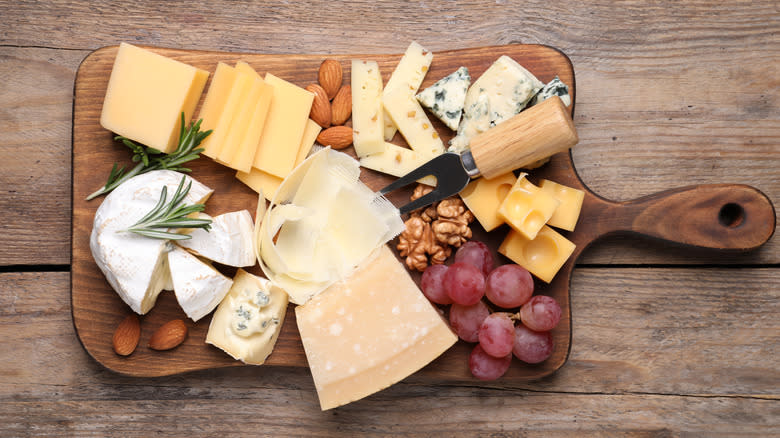
Your cheese doesn't definitely have pus in it, but it absolutely might. Milk can contain pus (from infected udders), as well as animal waste and a whole host of bacteria. And cheese is made from milk so it follows that it can also contain these things. Of course, this is why milk is pasteurized — to make it safe to consume — but even if it's safe to eat cheese that contains a little bit of pus, do you really want to?
And, before you think this is all a scare story to put people off dairy, the USDA has regulations about how much pus is allowed in milk. And it lists the average amount of pus found in samples it's taken — which is 206,500 cells per milliliter. Realistically, this is probably a very small amount, but pus is pus and it's natural to be squeamish about drinking it in your milk or eating it in your cheese.
Smelly Cheese And Smelly Feet Contain The Same Bacteria
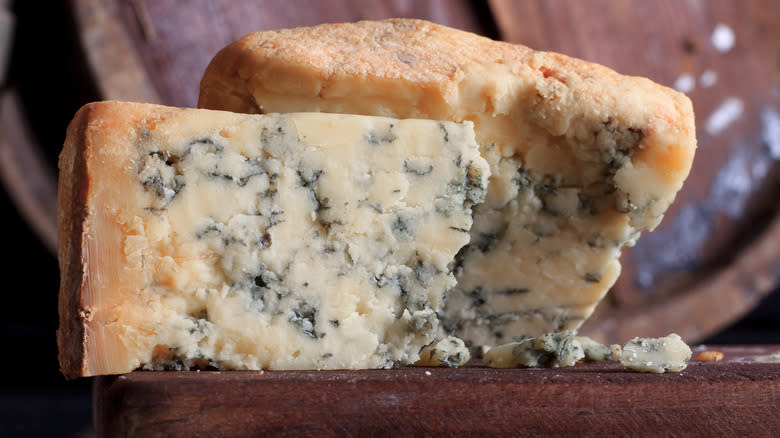
Ever wondered why the stinkiest cheeses out there have an odor in common with old shoes or unwashed socks? Well, it all makes sense when you understand the science, because you'll find the same bacteria on some cheeses and you'll find on smelly, sweaty skin.
One of the responsible types of bacteria is Brevibacterium aurantiacum. While it's totally harmless, it lives on our skin and particularly thrives on feet and toes. It releases a gas called methanethiol when it digests our skin cells — and this gas has a heavy sulphuric odor. Now, this same bacteria is also used to ripen a range of cheeses, including Port-du-Salut, Munster, Raclette, and Morbier. It plays a role in the flavor and the texture of the cheese — and it explains why some cheese smells distinctly footlike.
Then there's the fact that most cheeses contain methionine, an amino acid that breaks down into methanethiol. So there's another possible route to the old sock smell, even in cheeses where Brevibacterium aurantiacum isn't added to aid ripening. This all might sound a little weird, but if you like smelly cheeses, don't let a little bit of bacteria put you off just because it's also found on feet.
You Can Buy Cheese Made From Donkey Milk — And It's Expensive
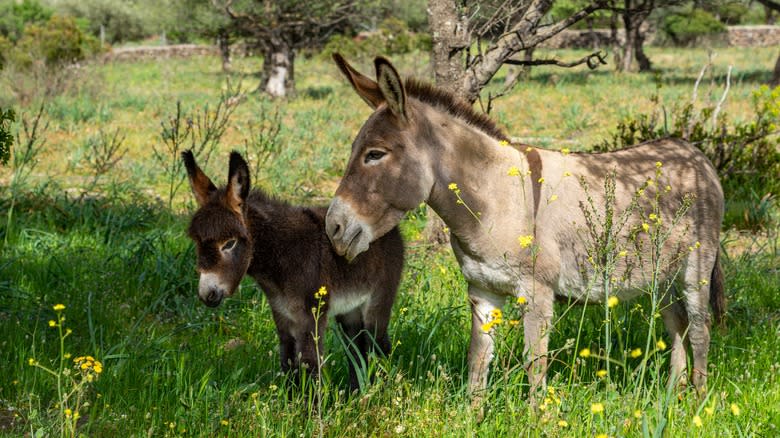
You're probably most familiar with cheese made from cow's milk — such as cheddar or Gruyère — but you wouldn't be surprised to eat cheese from goat milk or even from sheep milk. However, you might find it a bit more unusual that there's a cheese made using donkey milk.
This cheese is called Pule and it's made on a small farm in Serbia using milk from rare breed donkeys. It takes around 6.5 gallons of donkey milk to make just over 2 pounds of cheese. It's always made using a time-consuming and labor-intensive process. These factors combine to make it the most expensive cheese in the world. Just 1 pound of this cheese sells for $600. It's not the sort of thing you're going to pick up on your next trip to Costco.
It might seem surprising and a little weird to find cheese made from donkey milk, but it really shouldn't. Cheese can be made using milk from any mammal. It's all about our perceptions. There's no reason why it should be strange to make cheese from donkey milk or pig milk or dog milk, but totally normal to make it from cow milk or sheep milk.
The White Rind On Cheese Is Mold
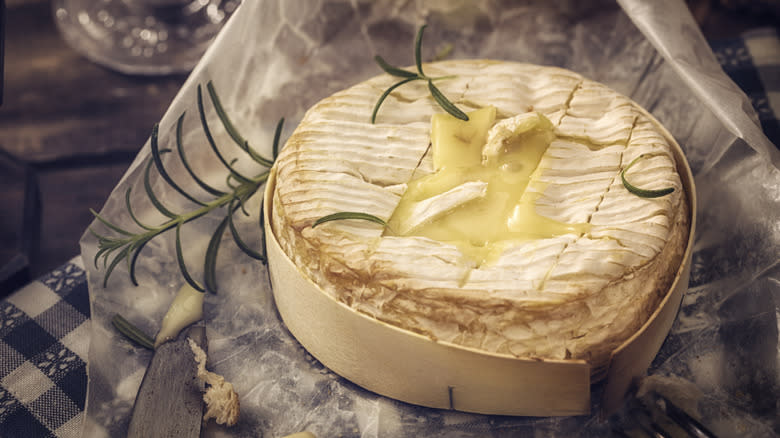
It's common knowledge that the blue veins through cheeses like Stilton and Gorgonzola are mold. It's controlled and safe to eat, bringing a distinctive flavor to the cheeses in question. Maybe you love these kinds of cheeses and maybe you avoid them. Either way, they tend to be divisive. So, it's no secret that blue cheese has mold growing in it, but did you know that the white rind on the outside of some cheese is also formed from mold?
These types of cheeses are known as bloomy-rind cheeses. Brie and Camembert are perhaps the most commonly known examples. The rind contributes to both the creamy texture and the butter taste of bloomy-rind cheeses. It's achieved by coating the outside of the cheese with Penicillium candidum mold spores during the aging process. As these cheeses are aged, the spores grow into a mold that coats the outside of the cheese. It's totally safe to eat, but some people get grossed out by mold on cheese, so it's good to know what you're eating.
There's A Traditional Sardinian Cheese That's Infested With Maggots
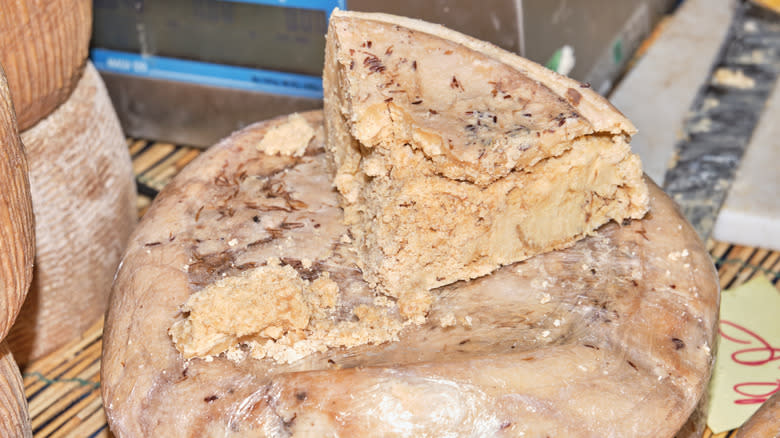
If you were squicked out by cheese with mold on it, just wait until you learn more about casu marzu. This traditional Sardinian cheese has live maggots inside it. While the initial reaction to this might be one of disgust, it's common to eat insects and grubs in many cultures. Is it really weirder than eating meat or drinking milk from another animal?
This cheese is made when cheese skipper flies lay eggs in the cracks that form in pecorino Sardo cheese — Sardinia's own type of pecorino. This small Italian island doesn't have a long written history of its food, but inhabitants have been making pecorino from sheep milk since the bronze age, so it's likely that casu marzu dates back hundreds, or even thousands, of years. It probably came about by accident, as flies laid their eggs in the cheese, leading to maggots growing inside. Even today, there's some degree of chance to which wheels or pecorino will turn into casu marzu.
This has some local protection as a traditional Sardinian food, but it has also been banned by the Italian government as being potentially harmful to health. This means that it's illegal to sell or commercially produce casu marzu. So, if you're hoping to give it a try, you might need to make some friends in rural Sardinia.
One Cheese Is So Stinky That It's Officially Banned From Parisian Public Transit
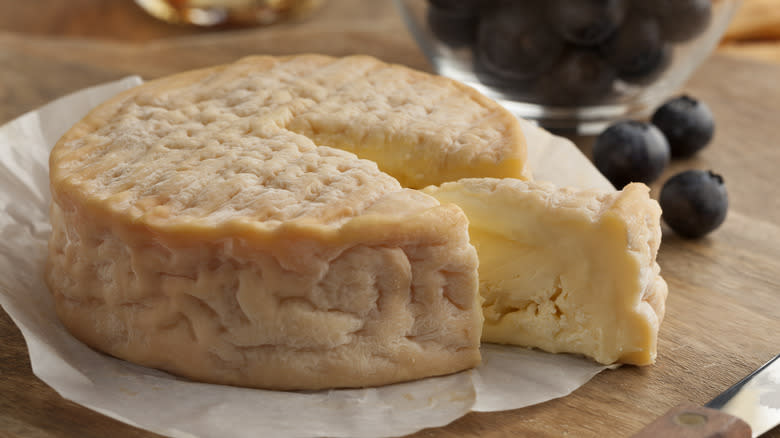
Now we know that microbes are good news when it comes to complex cheesy flavors. But, they can also be bad news in the smell department. Even if you like stinky cheeses, you've probably had those times when you've opened the fridge and felt like you've been hit in the face by the smell of your special cheeses. But unless you've had Epoisses de Bourgogne, you ain't seen (or smelled) nothing yet.
This is known as one of the stinkiest cheeses in the world. It's a washed-rind cheese. This means — like blooming-rind cheeses — it has mold spores spread on its exterior to help form a rind. However, what makes this process different is that the rind is regularly washed during the aging process to make it more hospitable to bacteria, which increases the stink.
In the case of Epoisses de Bourgogne, it's washed with a local brandy called Marc de Bourgogne. The washing process goes on until the cheese starts to smell like sour milk. And this gives you a cheese with such a powerful stench that people are banned from taking it on public transit in Paris.
Read the original article on Mashed.


